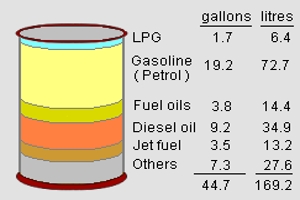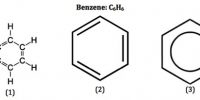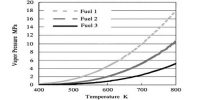Gasoline might of course simply be a straight run distillate from crude oil. It might have been blended with reformed naphtha as an extender, and it might have had octane enhancers added. Increasingly important is FCC – fluid catalytic cracked – gasoline. This is made from higher boiling material by cracking, which is a more vigorous process than reforming. A particular gasoline might not have originated from crude oil at all. It might have been made from (syncrude’ from shale oil, or it might have been made from tar sands. Mother route to gasoline is synthesis gas made from coal or natural gas.)

It is clear then that gasoline comes from very varied sources and that provided certain specifications are met the origin will be irrelevant to the final user. It is likely that a motorist driving up the west side of the US will whilst in California, Oregon and Washington buy gasoline made from crude oil, but on crossing the border into western Canada he/she might well purchase gasoline made from tar sands. Quality control of gasoline production in each case will ensure that, so to speak, the car’s engine will totally unaware of differences in origin of fuel it receives.
The ‘gasoline substitutes’ of interest in this chapter are methanol and ethanol.












